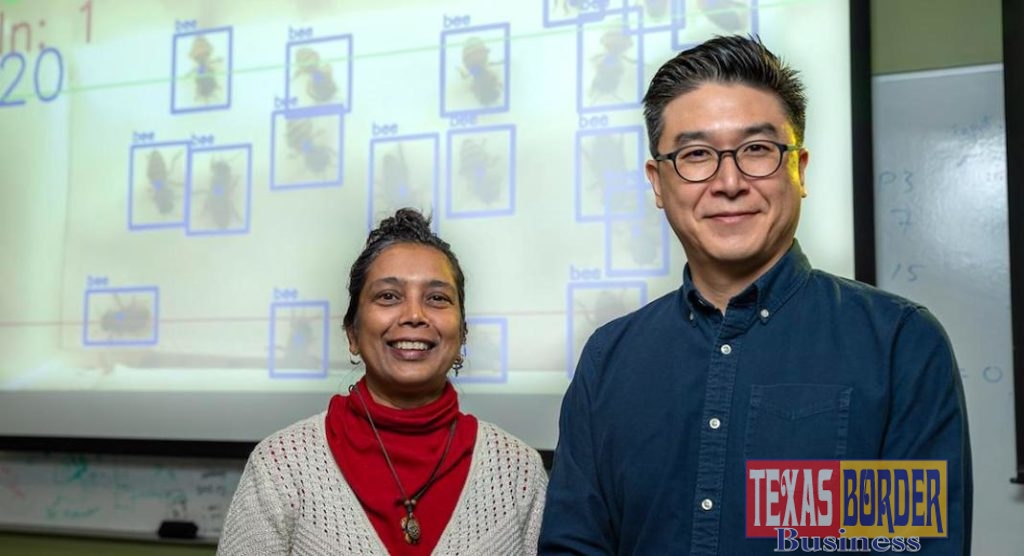
Texas Border Business
By Victoria Brito Morales
RIO GRANDE VALLEY, TEXAS – Research by two UTRGV professors is monitoring the critical honeybee population in South Texas via tiny cameras placed on their hives.
The research, by Dr. Dongchul Kim, assistant professor of computer science, and Dr. Joanne Rampersad-Ammons, a professor in the School of Earth, Environmental and Marine Sciences, is funded by a federal research grant from the USDA. Kim is the principal investigator on the project, and Rampersad-Ammons is co-PI.
The three-year project – “Applying Computer Vision Technologies To Honey Bee Health and Surveillance: Building Capacity in Agricultural Engineering at an HSI” – began Sept. 1 and has two parts.
The first is to develop an artificial intelligence device to monitor honeybee hives using a tiny camera installed on the hive that monitors and gathers data. The data then will be uploaded to a server using an algorithm created by Kim for visualization.
“When you think about South Texas, Africanized honeybees have been coming north for a long time,” Rampersad-Ammons said. “So, one of the things that we want to do is, we want to be able to monitor our colonies, how they are behaving and what is their health.”
Kim, who is in the UTRGV College of Engineering and Computer science, and Rampersad-Ammons, from the College of Sciences, are collaborating across disciplines to make the project possible.
The second part of the project is to create a bridge to get more engineering students involved in agriculture and sensitize them to the field.
Rampersad-Ammons said the idea of agriculture often is not fully understood.
“A lot of engineering students don’t know what the career opportunities are like in agricultural science,” she said. “Agriculture is now drones and high-tech tractors with GPS units, and things like that. Engineers are the ones bringing about this revolution.”
She said the possibility of high-tech applications makes engineers the ideal candidates to help bring about a revolution in agriculture techniques.
Kim said graduate students are a vital part of the project, and Rampersad-Ammons said they are inviting expert guests to help out.
“We will be bringing to campus every other month a practicing ag engineer, who will speak to the students about their career path and what made them get into agriculture. That way, students can see the connection,” she said.
THE DILEMMA AND THE SOLUTION
Currently, the planet’s human population is at about 7 billion. According to a 2017 report by the Association of Public Land-Grant Universities, the population is projected to grow by 3 billion within 30 years. And that will make feeding everyone a challenge.
“We are at what is called ‘carrying capacity,’” Rampersad-Ammons said. “We can grow enough food to feed everyone, but if the population grows, 30 years is not a long time to adjust. We have to figure out how to do agriculture sustainably.”
Farmers are at a median age of 50 to 60, so new methods are needed to continue the future of agriculture.
“We are going to have to figure out how to use our resources more efficiently and this is what engineers specialize in doing,” she said. “We need the engineers on board for this project.”













